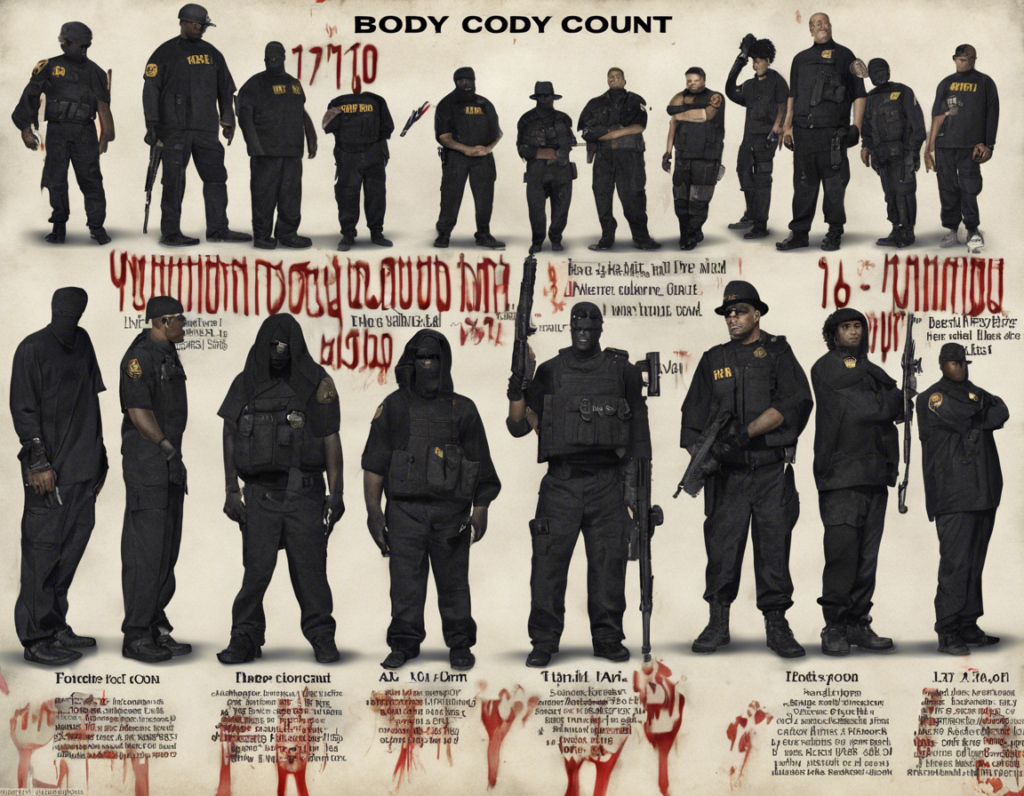When it comes to action films, horror movies, and even some dramas, one common element that often stands out to viewers is the body count. The term “body count” refers to the number of on-screen deaths that occur throughout a movie. While this may seem like a morbid or even trivial aspect of filmmaking, the body count can actually serve several important purposes in a movie. In this article, we will delve into the significance of body count in movies and explore how it can contribute to the overall impact of a film.
Setting the Tone
One of the key functions of a body count in movies is to set the tone for the film. A high body count early on in a movie can establish a sense of danger, tension, and unpredictability. It signals to the audience that no character is safe and that the stakes are high. This can create a sense of unease and keep viewers on the edge of their seats as they wonder who will survive and who will meet their demise.
Building Suspense
In addition to setting the tone, a body count can also help build suspense throughout a movie. Each death can ratchet up the tension as characters are picked off one by one. The audience is left wondering who will be next and how the remaining characters will escape or survive. This sense of anticipation can keep viewers engaged and invested in the story, eager to see how it will all unfold.
Heightening Emotional Impact
The impact of a character’s death on the audience can be amplified by the body count in a movie. When multiple characters are killed off, the emotional stakes are raised, and the audience may feel a greater sense of loss and devastation. This can lead to a more powerful emotional response from viewers, as they mourn the deaths of their favorite characters and feel a deeper connection to the story.
Demonstrating Consequences
Another important function of a body count in movies is to demonstrate the consequences of the characters’ actions. Whether it’s a group of teenagers making poor decisions in a horror film or a band of criminals facing off against law enforcement in an action movie, the body count can show the real and often deadly repercussions of their choices. This can add depth and complexity to the story, highlighting the moral dilemmas and ethical challenges faced by the characters.
Reflecting Themes and Messages
The body count in a movie can also be used to reflect and reinforce the themes and messages of the film. For example, in a war movie, a high body count may underscore the devastating impact of conflict and the futility of violence. In a slasher film, the body count may symbolize the consequences of promiscuity or other societal taboos. By using the body count in a deliberate and thoughtful way, filmmakers can imbue their work with deeper meaning and provoke thought and discussion among viewers.
Common Misconceptions
Despite the significance of body count in movies, there are some common misconceptions surrounding this aspect of filmmaking. One of the most frequent misconceptions is that a high body count is synonymous with a successful or entertaining movie. While a high body count can create tension and suspense, it is not a guarantee of quality. A well-crafted story, engaging characters, and skilled direction are just as important, if not more so, in creating a memorable and impactful film.
Frequently Asked Questions (FAQs)
1. What is the highest body count in a movie?
– The record for the highest body count in a movie is held by the 2013 film “Guardians of the Galaxy.” The body count in this movie reportedly exceeds 83,871.
2. Are there any genres where body count is less significant?
– While action and horror films tend to have higher body counts, genres like romantic comedies and dramas typically have lower body counts as the focus is more on character development and relationships.
3. Does a higher body count make a movie more violent?
– Not necessarily. A high body count does not always equate to more violence in a movie. The way in which deaths are depicted, the context in which they occur, and the overall tone of the film all play a role in how violent a movie is perceived to be.
4. Can a low body count still make for a compelling movie?
– Absolutely. A compelling story, well-developed characters, and strong emotional stakes can make for a gripping movie even with a low body count. Films like “The Shawshank Redemption” and “The Social Network” are examples of movies that are engaging despite the minimal on-screen deaths.
5. How does a body count impact viewer enjoyment of a movie?
– The impact of a body count on viewer enjoyment can vary depending on individual preferences. Some viewers may enjoy the tension and excitement generated by a high body count, while others may prefer movies with fewer on-screen deaths that focus more on character development and plot.
Conclusion
In conclusion, the body count in movies plays a significant role in shaping the tone, building suspense, enhancing emotional impact, demonstrating consequences, and reflecting themes and messages. While a high body count can add intensity and excitement to a film, it is not a standalone measure of a movie’s quality or entertainment value. Ultimately, the effectiveness of a body count in a movie lies in how it is used to serve the story, characters, and overall message of the film. Filmmakers must carefully consider the implications of the body count in their movies to create a memorable and meaningful viewing experience for audiences.
